[/caption]
The three man Soyuz TMA-21 crew of cosmonauts and astronauts comprising of Commander Alexander Samokutyaev, Expedition 28 commander Andrey Borisenko and NASA flight engineer Ronald Garan made a pinpoint landing following a flawless descent and touched down safely in the southern steppes of Kazakhstan at 12:00 AM EDT today, Sept. 16, (10 AM local time), thereby wrapping up a nearly six month tour of duty at the International Space Station.
The Soyuz capsule landed on its side as it is frequently wont to do, about three hours after sunrise. The soft landing engines fired within seconds of touchdown to cushion the shock.
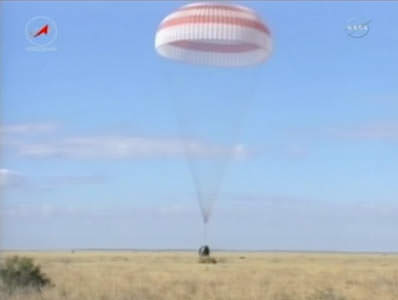
A phalanx of twelve Russian search and recovery helicopters swooped in quickly after landing. The Russian forces had established two way communications and visual sighting with the space flyers in the last minutes of the descent.
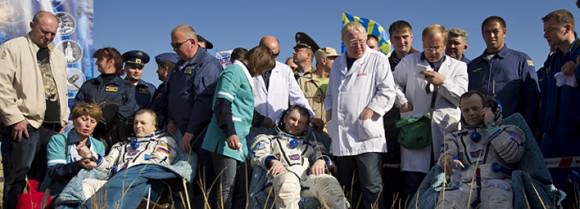
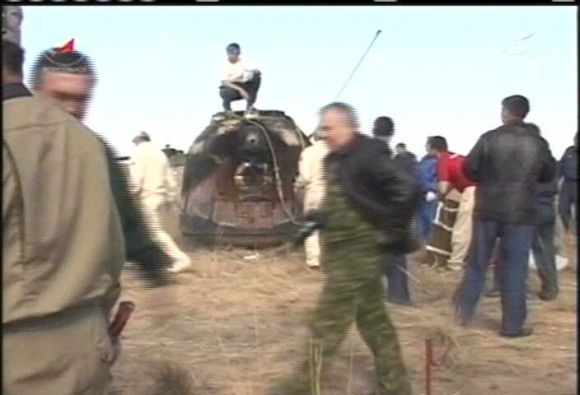
Weather was perfect with very low winds, few clouds and warm temperatures of nearly 70 degrees Fahrenheit.
Altogether the trio spent 164 days in space, 162 of those were aboard the ISS. Their Soyuz capsule had docked at the ISS on April 7, 2011 following a two day trip after liftoff on April 5 from the Baikonur Cosmodome aboard a capsule dubbed Gagarin. The spaceship was named in honor of Yuri Gagarin, first human to orbit the Earth on the 50th anniversary of his courageous one orbit flight in April 1961 that inaugurated the Era of human spaceflight.
This crew lived aboard the ISS for the arrival of the final two history making flights of the Space Shuttle program as well as the anniversaries of Gagarin and America’s first astronaut in space, Alan Shepard.
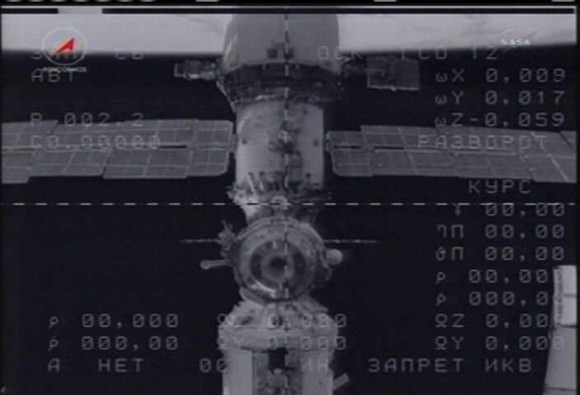
The helicopter recovery team arrived at the Soyuz capsule with seconds of touchdown and began erection of an inflatable medical tent. The Soyuz was rolled to facilitate the safe and proper extraction of the crew.
The astronauts and cosmonauts were quickly extracted from the capsule by the ground crew, checked by doctors and placed in recliners for the two hour trip back to a staging base in Karaganda, Kazakhstan for a traditional Kazakh welcome. Thereafter the crew will split up. Garan will be returning immediately to the US on a flight back to the Mission Control in Houston, Texas.
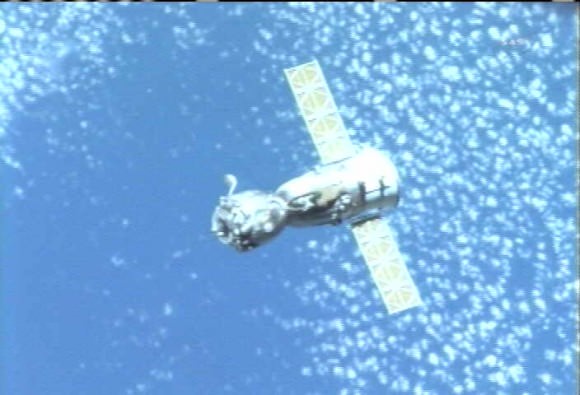
Just hours earlier this evening, the trio bagan the process of departing the ISS. They donned their Sokol launch and entry pressure suits, floated into the return capsule and closed the hatches between the Soyuz and the ISS.
Following leak checks the crew unhooked latches and undocked the Soyuz from the Poisk module at 8:38 p.m. while flying over northern China. Three minutes later thrusters were fired for 15 seconds to separate the two vehicles.
Left behind on the station was the Expedition 29 crew comprising Commander Mike Fossum from the US, cosmonaut Sergei Volkov from Russia and Japanese astronaut Satoshi Furukawa.
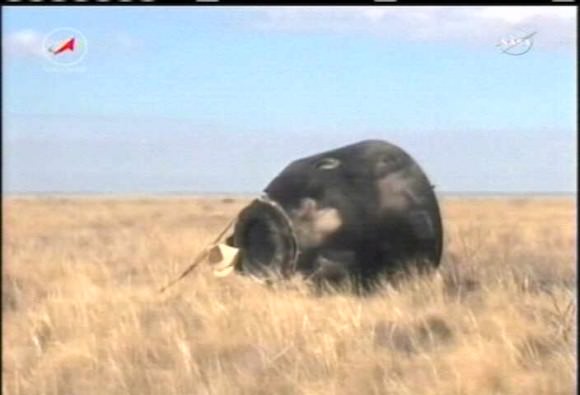
As the ISS and Soyuz were flying in tandem, the crew executed the 4 minutes 14 sec “de-orbit burn” which took place exactly on time at 11: 05 p.m. EDT. The critical Soyuz thruster burn slowed the ship by some 258 MPH and enabled the capsule to drop out of orbit, setting up the descent down through the Earth’s atmosphere.
Then the computer commanded pyrotechnic separation of the three Soyuz modules took place some 87 miles above Earth about 22 minutes later at 11:33 p.m., occurring just three minutes prior to re-entry into the Earth’s atmosphere over the heart of Africa.
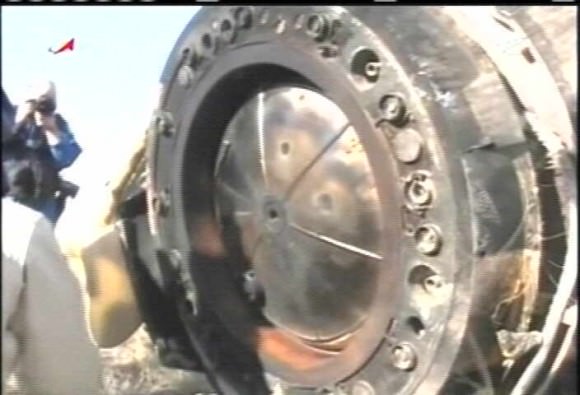
The crew landed inside the central descent module less than an hour after completing the burn and less than 30 minutes after module separation.
The ISS will now be tended by only a three man crew for the next two months. That’s an unusually long time to maintain a reduced crew. But it’s all due to the recent failure of the third stage of the Russian Soyuz-U rocket lofting the Progress 44 cargo ship on Aug 24. The failure has been traced to a clogged fuel line. Russia is working to determine exactly how and why this could have happened and taking steps to prevent a repeat which would have disastrous consequences.
The next Soyuz blastoff is provisionally set for Nov.14 with a station arrival on Nov. 16. The three man crew of Anton Shkaplerov, Anatoly Ivanishin and NASA flight engineer Dan Burbank had originally been slated for Sept 22. But it was pushed back following the Progress launch failure.
Mike Fossom’s crew is scheduled to depart just 2 days later. Thus any further Soyuz launch delay wil require the ISS to be at least temporarily “de-manned” for the first time since continuous crewed operations started a dozen years ago.
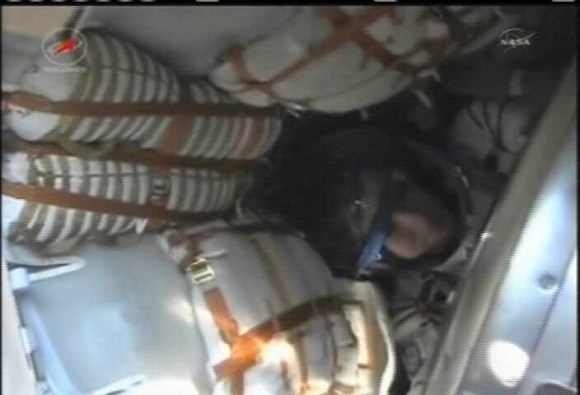

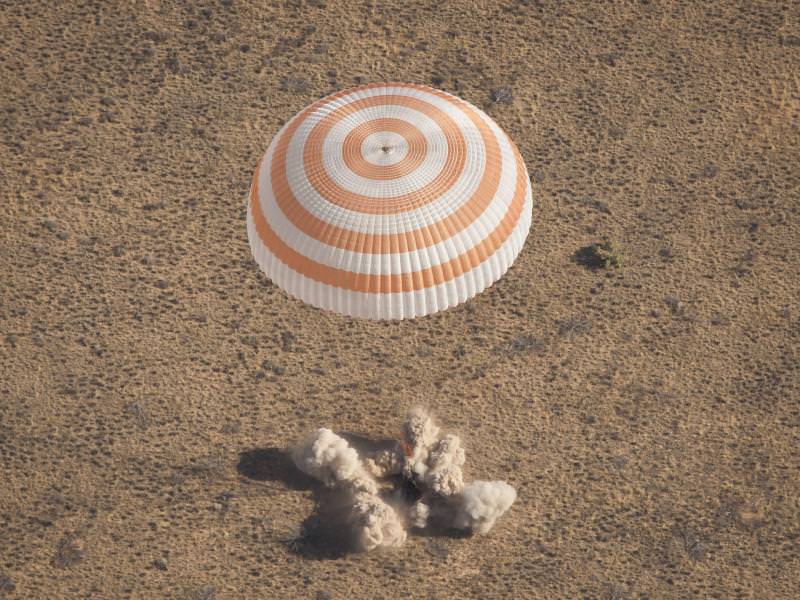
Gratuluj? szcz??liwego powrotu.
http://punkt30.blogspot.com/
Gratuluj? szcz??liwego powrotu.
http://punkt30.blogspot.com/
First paragraph…”following” instead of “flowing”. Second paragraph: “wont” instead of “want”. Last paragraph: “scheduled” instead of “schedule”. Just scanned the rest of it. Rather thorough!
Its like Micheal Barratt said when landed in the Soyuz, the term breaking rockets are a misnormer.